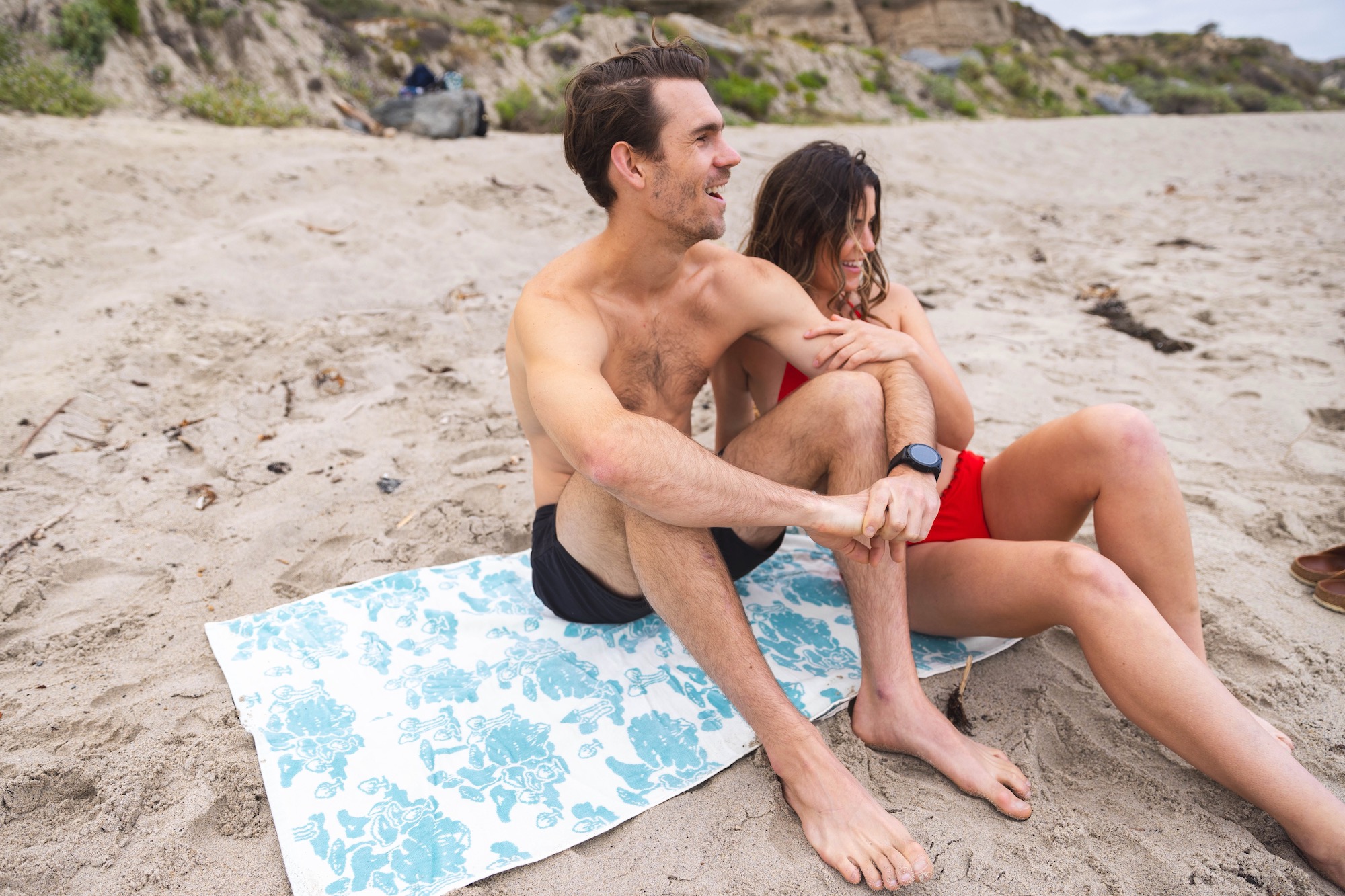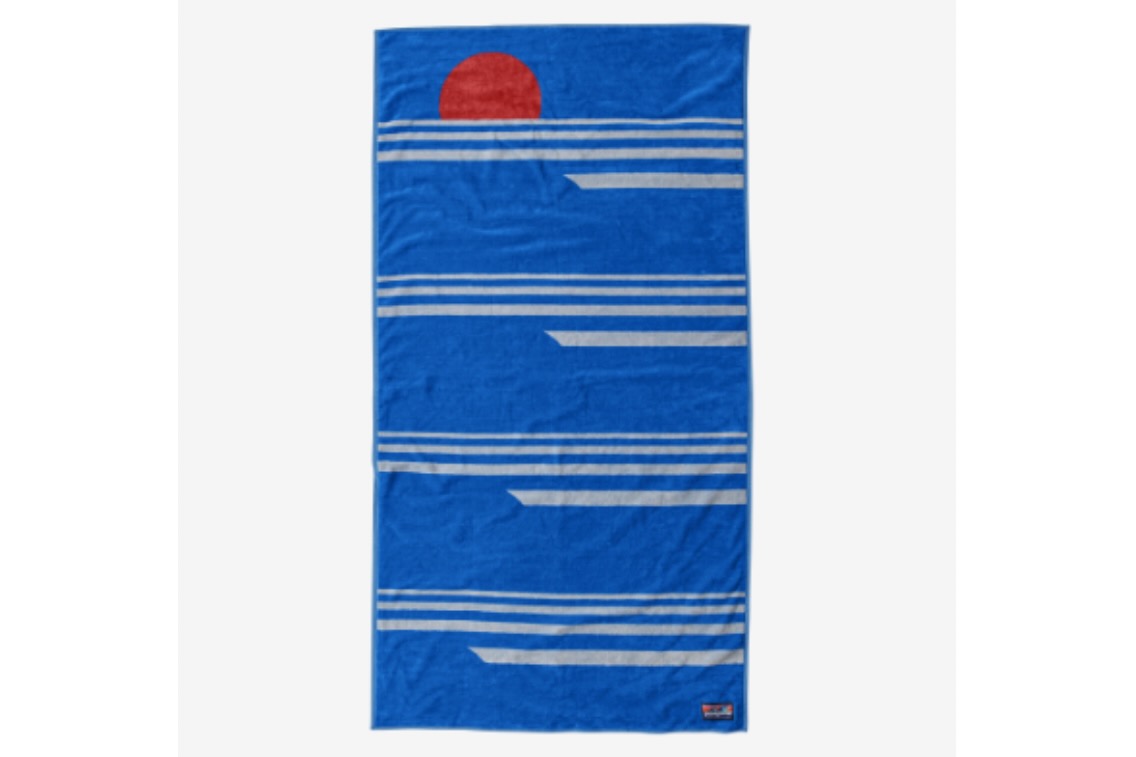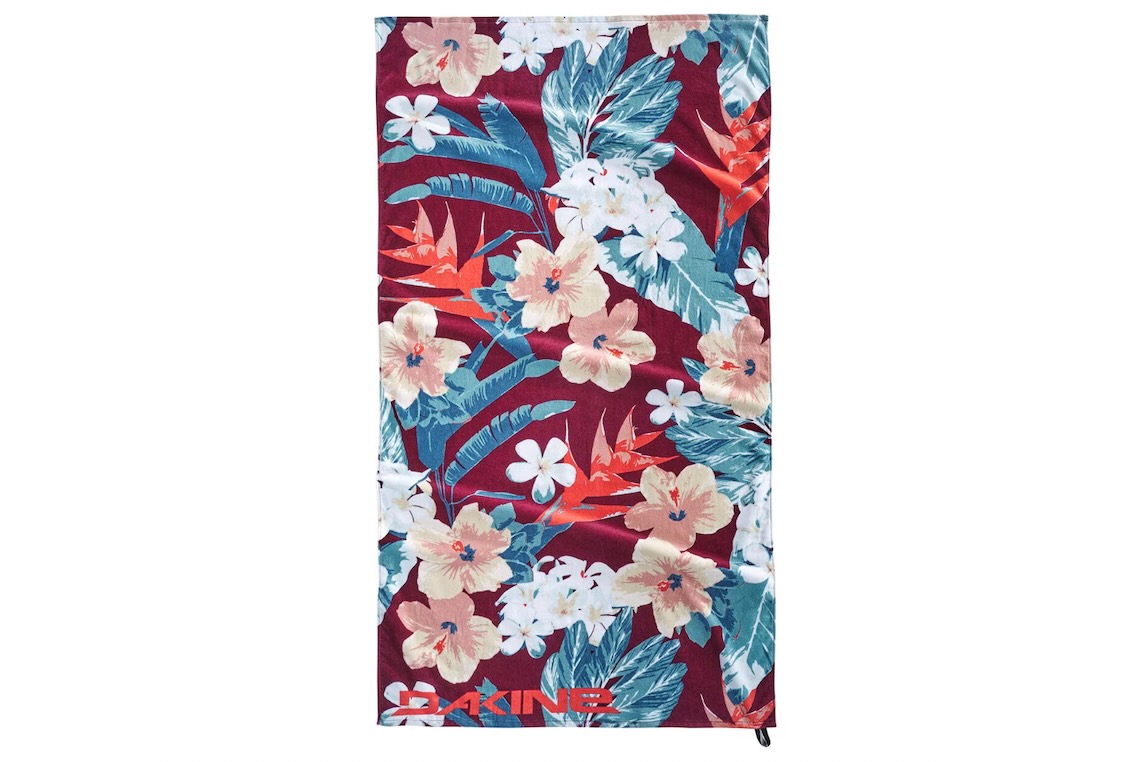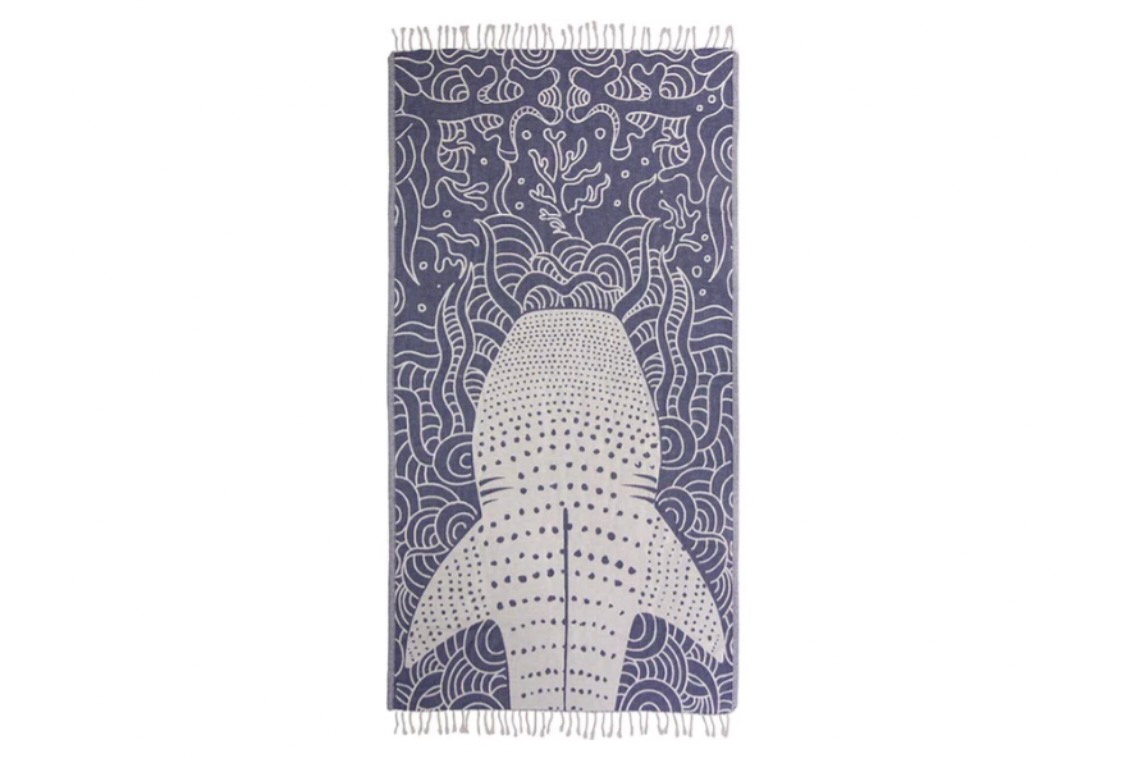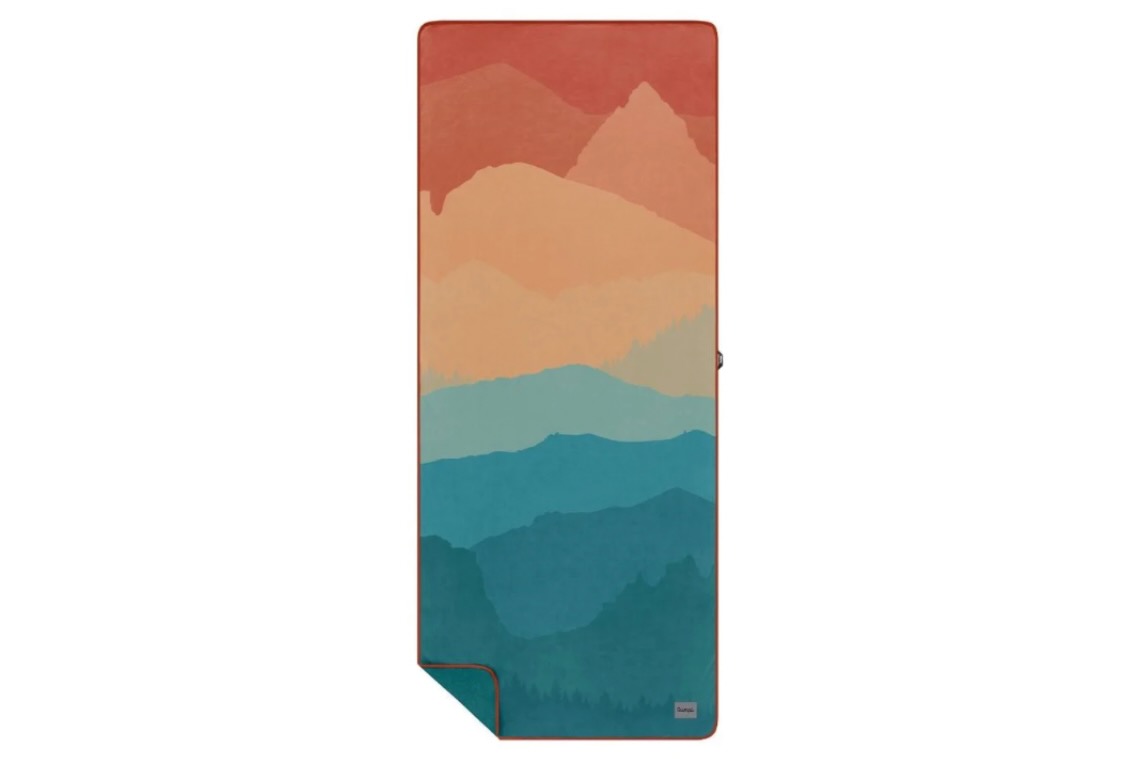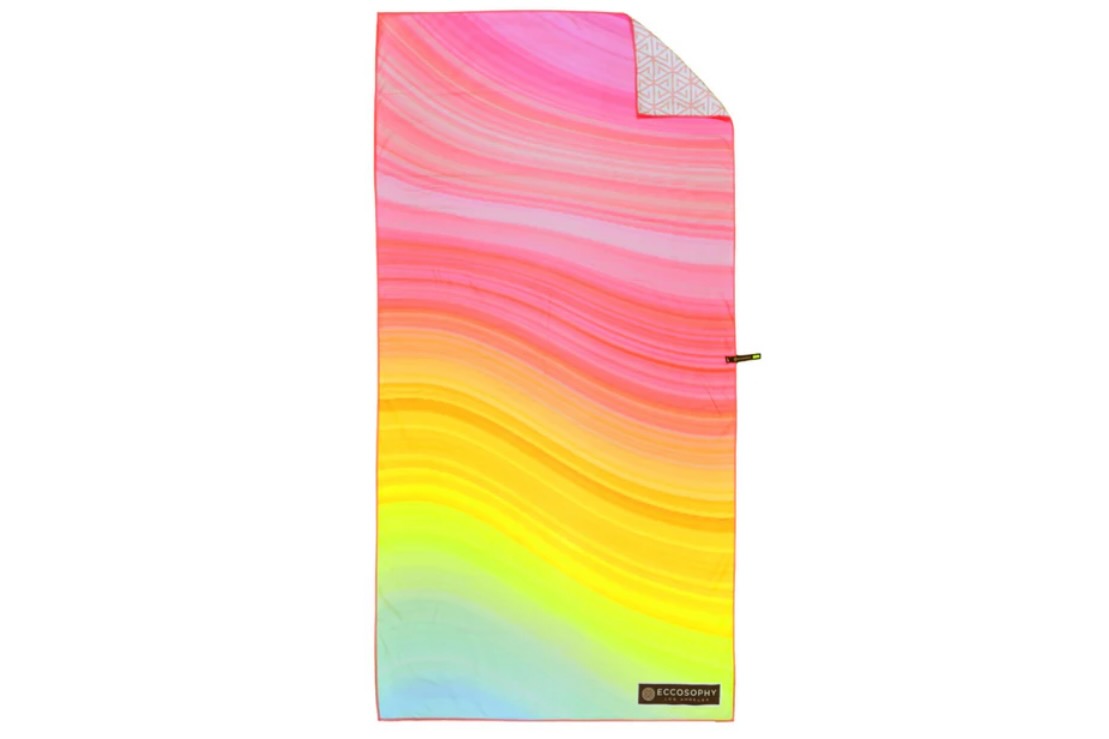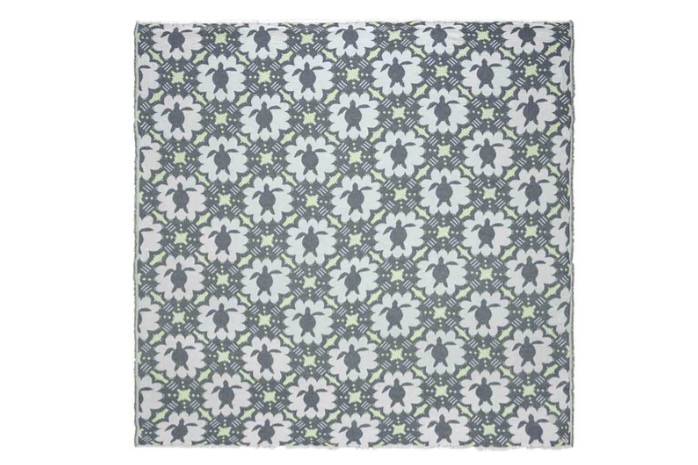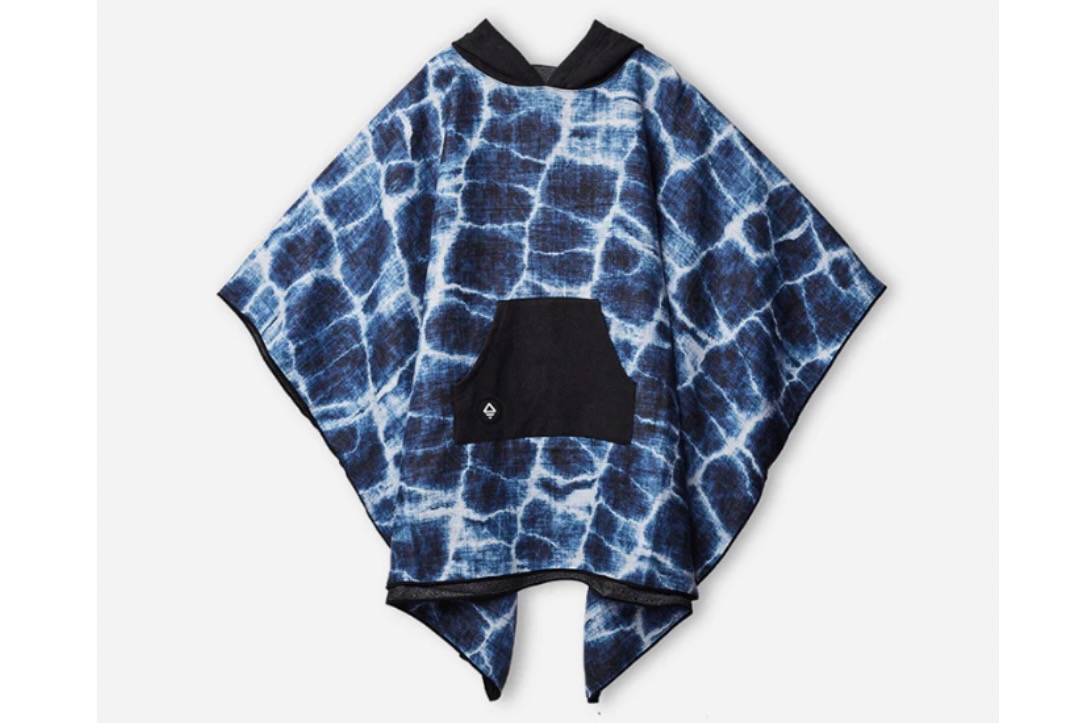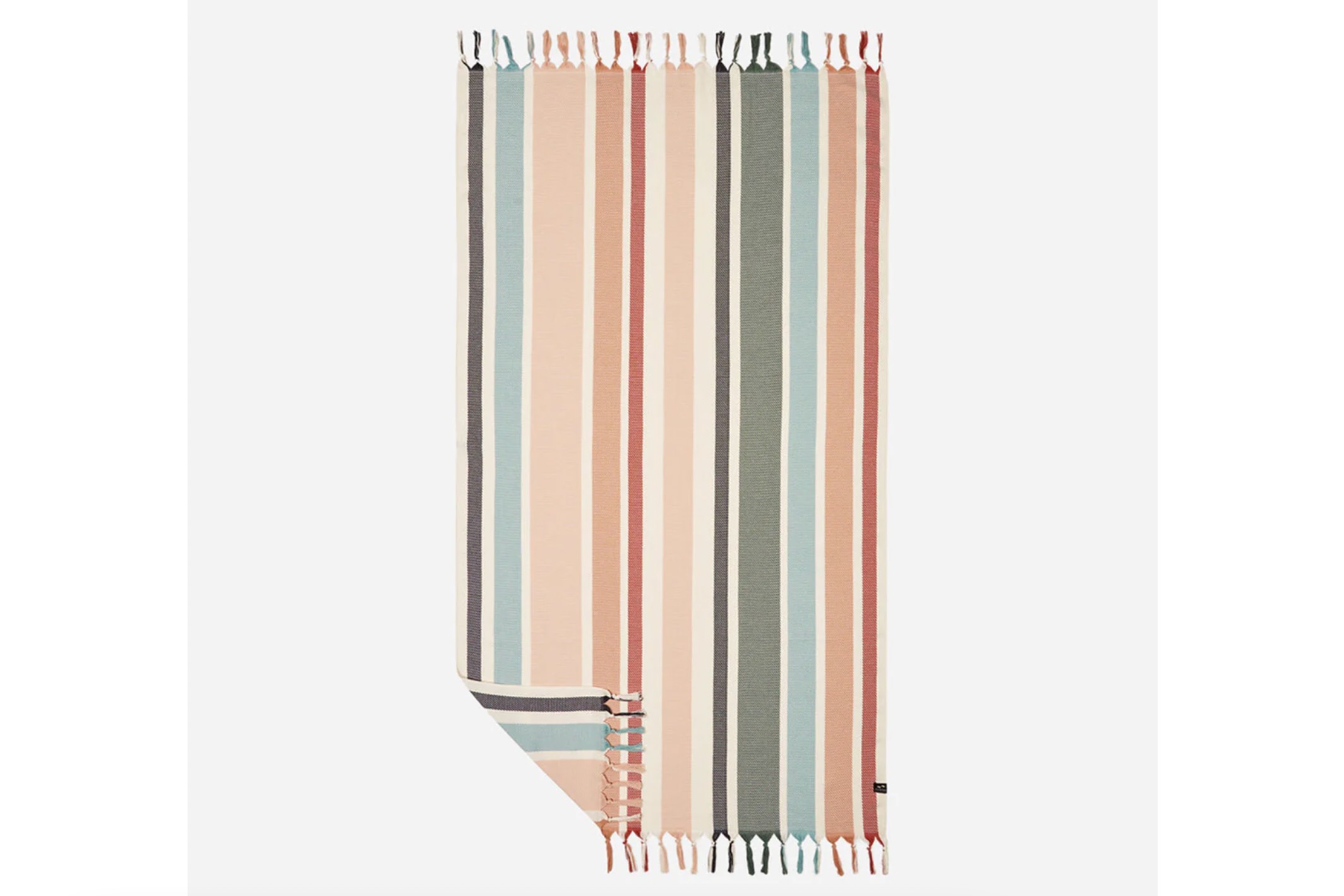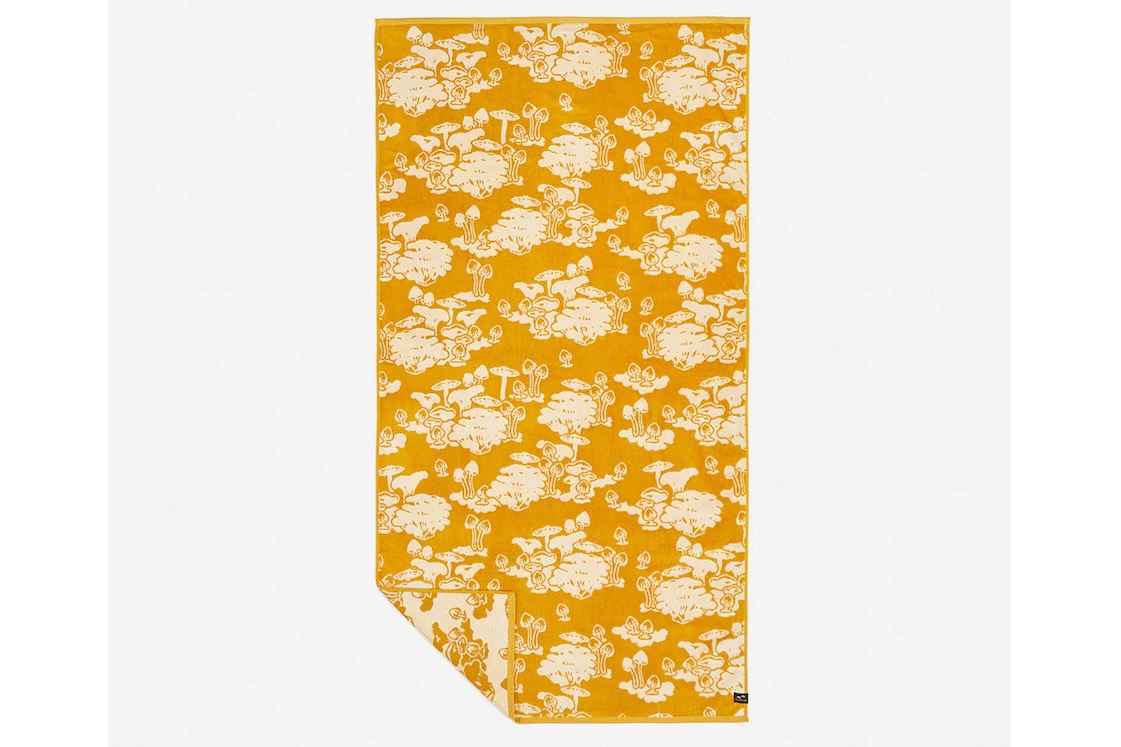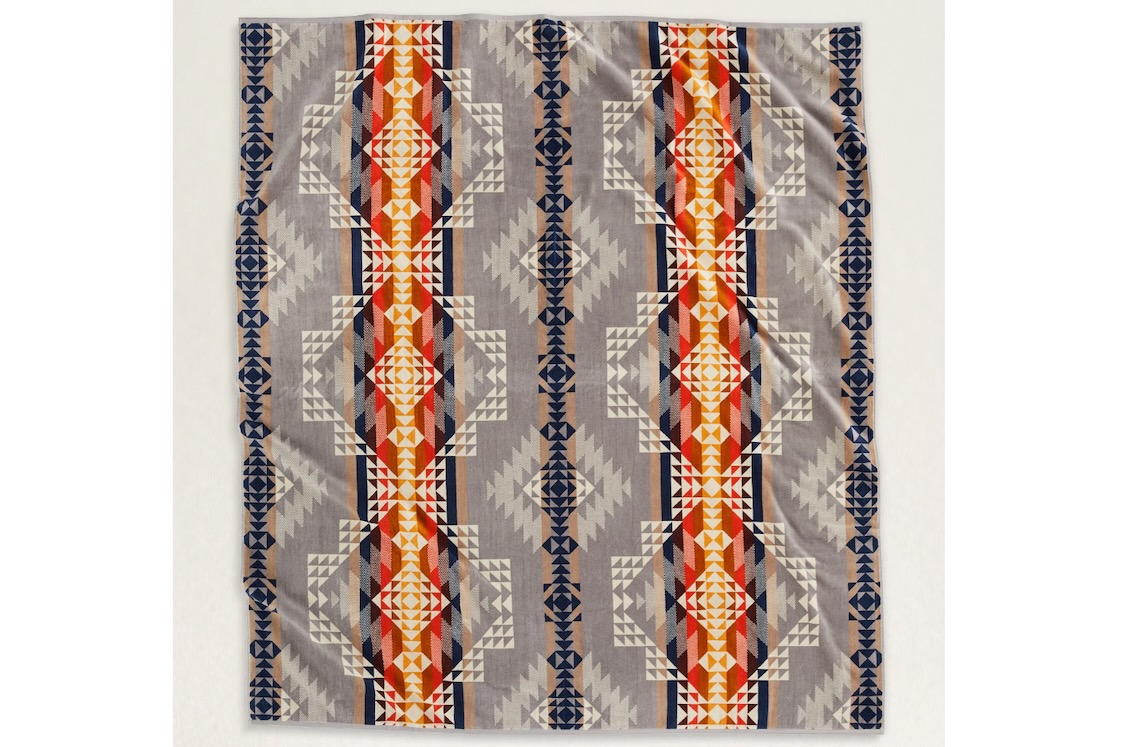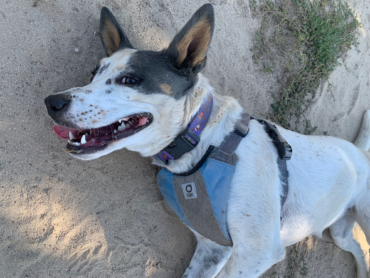No trip to the beach is complete without the perfect beach towel. Whether your favorite beach spot is by the ocean, lake, or river, the best beach towel provides a space to kick back, relax, and, of course, help you dry off.
These days, beach towels come in a variety of different materials that provide varying levels of absorbency, sand resistance, warmth, packability, and comfort. We also have options for different sizes and designs for personal use, groups, or the ever-important clothing change. The best beach towel is one that is both functional during all your outdoor adventures and can also be a statement piece that shows off your personality — be it whimsical, rugged, or anything in between.
With so many options to choose from, finding the ideal beach towel for your needs can be a challenge. To help, we gathered a diverse selection of 10 beach towels for testing and comparison. Writer and beach gear expert Jackie Connor has spent the past 20 years using beach towels of all kinds during her surf and outdoor adventures. From serving as that extra layer of surfboard padding for travel to her first line of defense against post-surf chills and towel changes, she knows a quality beach towel is an essential part of anyone’s beach adventures.
From chilly surf sessions in the Pacific Ocean to sunnier, warmer days on southern California beaches, these towels have been tested for absorption, warmth, sand resistance, and durability. Whether you’re seeking a comfortable and warm cotton towel, a packable and lightweight microfiber option, or something to lounge on with your sweetheart or family, we’ve got recommendations for you.
Editor’s Note: We updated our beach towel guide on July 16, 2024, after testing and adding the Sand Cloud Turkish Beach Towel and the Slowtide Turkish Towel to our selection.
The Best Beach Towels of 2024
- Best Overall Beach Towel: Patagonia Organic Cotton Towel
- Best Budget Beach Towel: Dakine Terry Beach Towel
- Best Turkish Beach Towel: Sand Cloud Turkish Beach Towel
- Best Portable Beach Towel: Rumpl Everywhere Towel
- Best Sand-Resistant Microfiber Beach Towel: Eccosophy Eco-Friendly Microfiber Beach Towel
- Best Oversized Beach Towel: Sand Cloud Party Blanket
- Best Multi-Purpose Beach Towel: Nomadix Poncho Beach Towel
Patagonia Organic Cotton Towel
- Material: Organic cotton
- Dimensions: 36" x 64"
- Weight: 1.6 lbs.
Pros
- Fits in most surf backpacks or beach bags
- Repels sand relatively well
- The dual-sided feature keeps you warm and dry
- Large size
Cons
- Color tested blends in with the sand making it harder to see from far away
- Is a little heavier when wet
- Takes several shakes and swipes to dislodge sand
Dakine Terry Beach Towel
- Material: 100% Cotton
- Dimensions: 34" x 63"
- Weight: 1.2 lbs.
Pros
- Budget-friendly
- Wide variety of colors and designs
- Easily packs down
- Great for water enthusiasts on the go
- Warm and plush for the price
Cons
- Wears after considerable usage
- Retains sand at an average rate
- Air dries slowly
Sand Cloud Turkish Beach Towel
- Material: 100% Organic Turkish cotton
- Dimensions: 37" x 67"
- Weight: 0.8 lbs.
Pros
- Lightweight
- Small packed size
- Quick-drying
- Soft
- So many designs to choose from
Cons
- Hard to choose a design
- Thin – doesn't provide much cushion or warmth
Rumpl Everywhere Towel
- Material: Polyester microsuede (95% polyester, 5% spandex)
- Dimensions: 29.5" x 72"
- Weight: 0.8 lbs.
Pros
- Repels sand very well when dry
- Lightweight when dry and wet
- Highly absorbent
- Cool colors and designs
Cons
- Sand sticks when wet
- Takes a while to try if it's super wet
Eccosophy Eco-Friendly Microfiber Beach Towel
- Material: Recycled microfiber
- Dimensions: 35" x 71"
- Weight: 0.5 lbs.
Pros
- Packs down
- Absorbent
- Repels sand
- Does not take on a smell
- Bright colors make it easy to see from afar
- Tons of pattern options
Cons
- Not plush for warmth
- Sand eventually sticks to towel after if it is soaked
Sand Cloud Party Blanket
- Material: 100% Turkish Organic Cotton
- Dimensions: 90" x 90"
- Weight: 1.3 lbs.
Pros
- Lighter weight and stretchy
- Repels sand relatively well
- Very soft to the touch
- Great for group activities
- Lots of pattern options
- Can double as a blanket in the home
Cons
- Expensive
- Air dry only – cannot be added to the dryer
- Not ideal for drying off after a rinse
- Larger size ultimately picks up more sand
Nomadix Poncho Beach Towel
- Material: 90% Recycled polyester, nylon
- Dimensions: Flat: 60" x 80", Worn: 30" x 40"
- Weight: 2.8 lbs.
Pros
- Multi-purpose functionality
- Super absorbent
- Quick drying
- One poncho towel equals 66 plastic bottles
Cons
- Not very plush
- Limited warmth
Best of the Rest
- Material: 100% sustainably sourced cotton – Oeko-Tex 100 & Leads certified
- Dimensions: 38" x 73"
- Weight: 0.8 lbs.
Pros
- Lightweight
- Small packed size
- Dries quickly
- Resists sand very well
- Lots of timeless styles – some funky ones, too
Cons
- Thin – not very plush or warm
- Not very absorbent when new
- Material: 100% sustainably sourced cotton
- Dimensions: 30" x 60"
- Weight: 1 lb.
Pros
- Ultra soft and plush
- Warm
- Convenient drying loop
- Slowtide products are sustainably and ethically sourced
Cons
- Heavy when wet
- Difficult to dislodge sand
- Not the fastest drying
- Material: 100% cotton
- Dimensions: 62" x 70"
- Weight: 3 lbs.
Pros
- Carrying strap
- Extremely soft and plush
- Unique boho designs
- Custom embroidery offered by Pendleton
Cons
- Heaviest towel tested
- Bulky
- Brings home more sand
- Requires extra attention when packing up
Beach Towel Comparison Chart
| Beach Towel | MSRP | Material | Dimensions | Weight |
|---|---|---|---|---|
| Patagonia Organic Cotton Towel | $59 | 100% Organic cotton | 36″ x 64 | 1.6 lbs. |
| Dakine Terry Beach Towel | $35 | 100% Cotton | 34″ x 63″ | 1.2 lbs. |
| Sand Cloud Turkish Beach Towel | $48 | 100% Organic Turkish cotton | 37″ x 67″ | 0.8 lbs. |
| Rumpl Everywhere Towel | $50 | Polyester microsuede | 29.5″ x 72″ | 0.8 lbs. |
| Eccosophy Eco-Friendly Microfiber Towel | $34 | Recycled microfiber | 35″ x 71″ | 0.5 lbs. |
| Sand Cloud Party Blanket | $158 | 100% Turkish organic cotton | 90″ x 90″ | 1.3 lbs. |
| Nomadix Poncho Beach Towel | $80 | 90% Recycled polyester, nylon | Flat: 60″ x 80″, Worn: 40″ x 40″ | 2.8 lbs. |
| Slowtide Turkish Towel | $50 | 100% Sustainably sourced cotton | 38″ x 73″ | 0.8 lbs. |
| Slowtide Wonderland Woven Towel | $50 | 100% Sustainably sourced cotton | 30″ x 60″ | 1 lb. |
| Pendleton Towel for Two | $90 | 100% cotton | 62″ x 70″ | 3 lbs. |
How We Tested Beach Towels
For our beach towel buyer’s guide, we recruited beach gear expert Jackie Connor to test and review all of the models included here. With over 20 years spent refining her surf skills, Jackie has become a self-proclaimed beach towel connoisseur. For Jackie, beach towels are an incredibly important go-to for warmth, drying off, and, like most surfers, a covert changing accessory. In her never-ending search for the perfect beach towel, she has tried everything from standard cotton terry towels, got curious about microsuede’s beach usability, and became a more refined procurer of all things Turkish cotton and fun boho designs.
Each towel was tested during her typical Southern California springtime surf adventures on solo missions and when hanging at the beach with friends. This involved stuffing each towel into a backpack or a beach bag alongside a wetsuit and other beach gear and walking approximately 1,000 feet to one mile to and from a local Southern California beach. She assessed the towels based on weight, material, sand resistance, drying time, warmth, and packability. Factors like destination distance played a role, as did air and water temperatures, with the added caveat that springtime offers some of the chilliest waters at her local surf breaks.
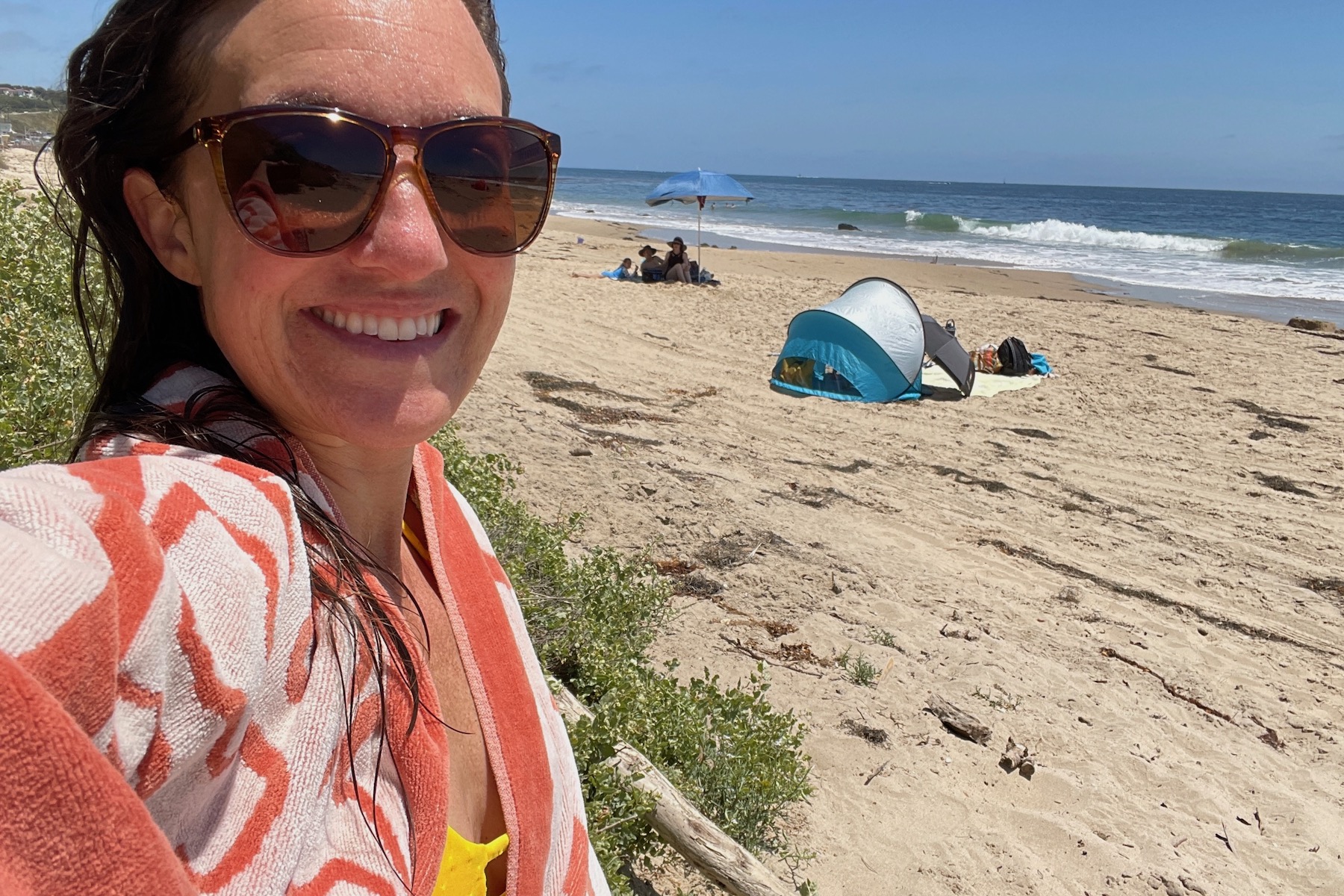
Buyer’s Guide: How to Choose a Beach Towel
For such a seemingly simple product, there are many factors to consider when choosing the best beach towel. One of the main things to think about is how you will use it and what performance characteristics are important to you. Is it just for personal use, or do you need something larger for two or more people to lie on? Is it simply for drying off, or do you need it to provide a little warmth at times as well? How far do you need to carry it, and how will you transport it to your beach spot? The answers to these questions should help you narrow down your search to find the perfect beach towel for your needs.
Material
One of the main differentiators of modern beach towels is the material used in their construction. Cotton is still the primary material used in most towels, but we’ve got both the more traditional looped, terry cotton and also Turkish cotton to choose from. Polyester has also become popular and is used to create microfiber and microsuede towels with different performance characteristics.
Cotton
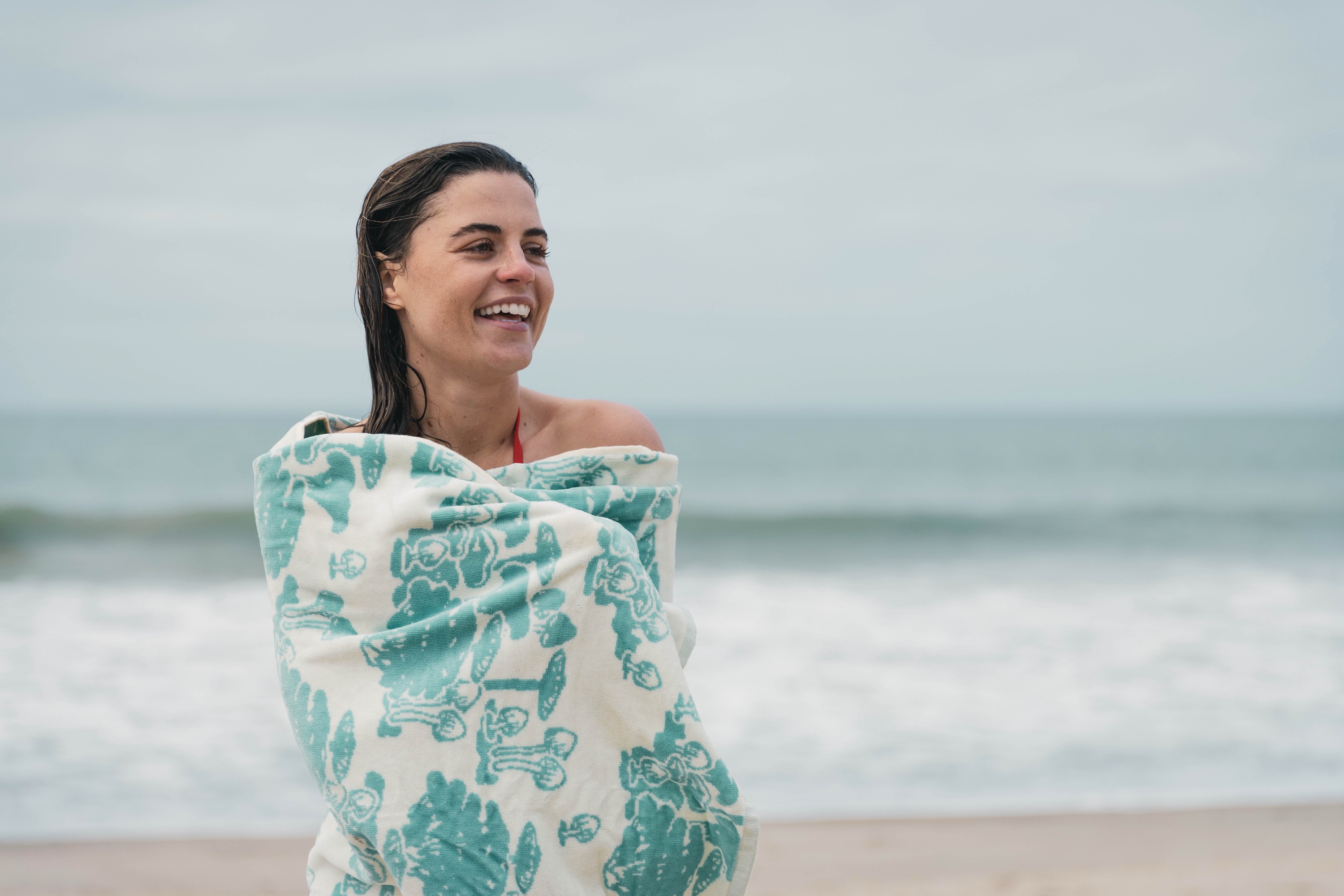
For towels of all kinds, cotton is still the primary material used. These days, however, we can choose between the more traditional looped, terry cotton, or Turkish cotton beach towels.
Looped, terry cotton — similar to what most bath towels are made of — is plush and soft against the skin, highly absorbent, and the loft of the loops provides a bit more warmth and cushion than thinner materials. The small cotton loops are more prone to capturing sand in the fibers, but many modern towels have a velour side — the loops are sheared off on one side — that is more sand resistant.
This two-sided approach gives users one side to put down on the sand and a plusher, more absorbent side to dry off with. The primary drawbacks to this type of beach towel are that they are typically a bit bulkier, they get heavy when wet, take longer to dry, and tend to trap a bit more sand than other materials.
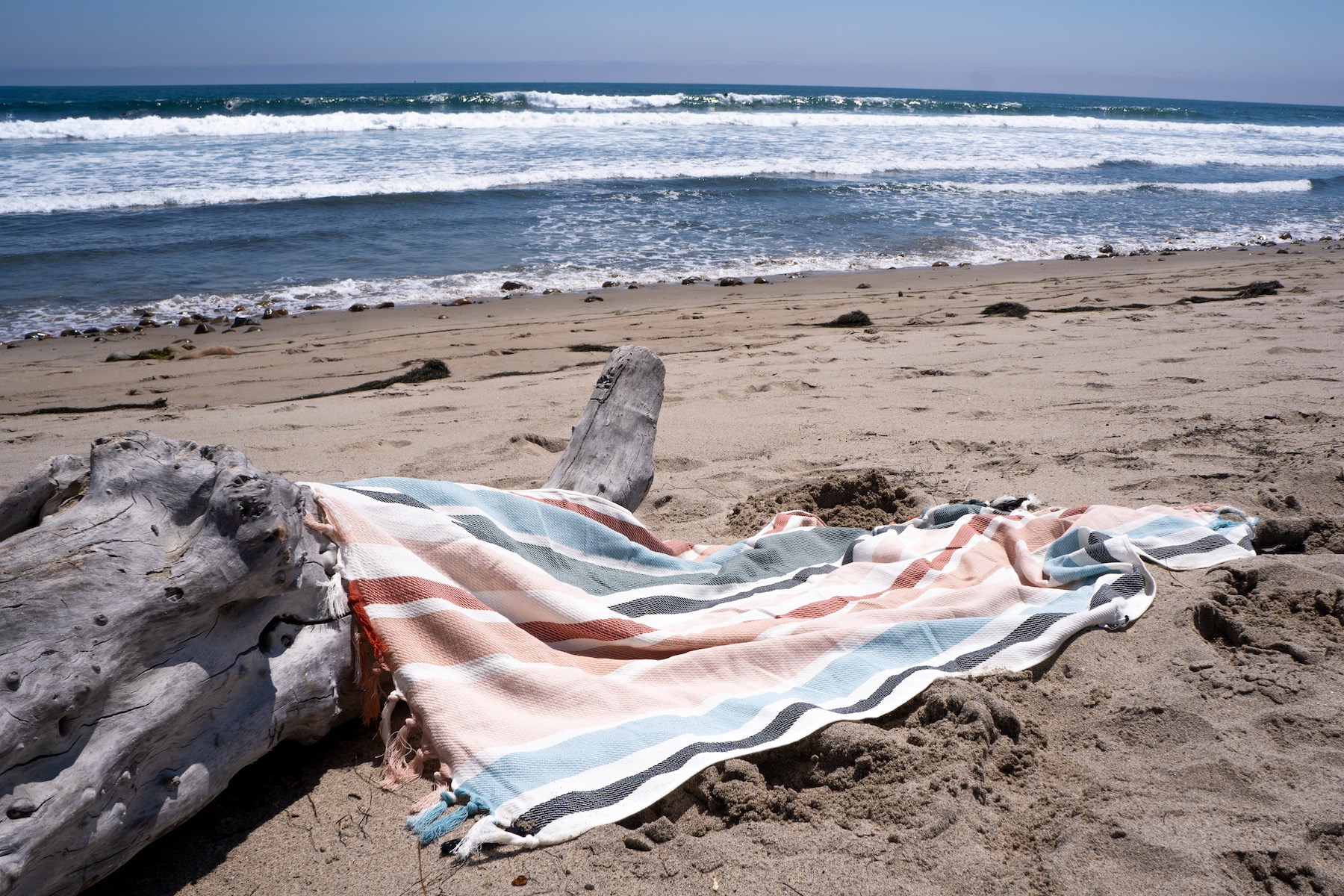
Turkish cotton towels are very popular as well. Made from long Turkish cotton fibers, these typically feature a thinner, woven construction. They still boast great softness and absorbency, although they aren’t quite as plush or warm as looped cotton described above. That said, they usually pack down much smaller and the woven construction doesn’t provide quite as many places for sand to cling to. Given that they are a bit thinner, Turkish towels also tend to dry out slightly faster than their looped cotton counterparts.
Polyester and Microfiber
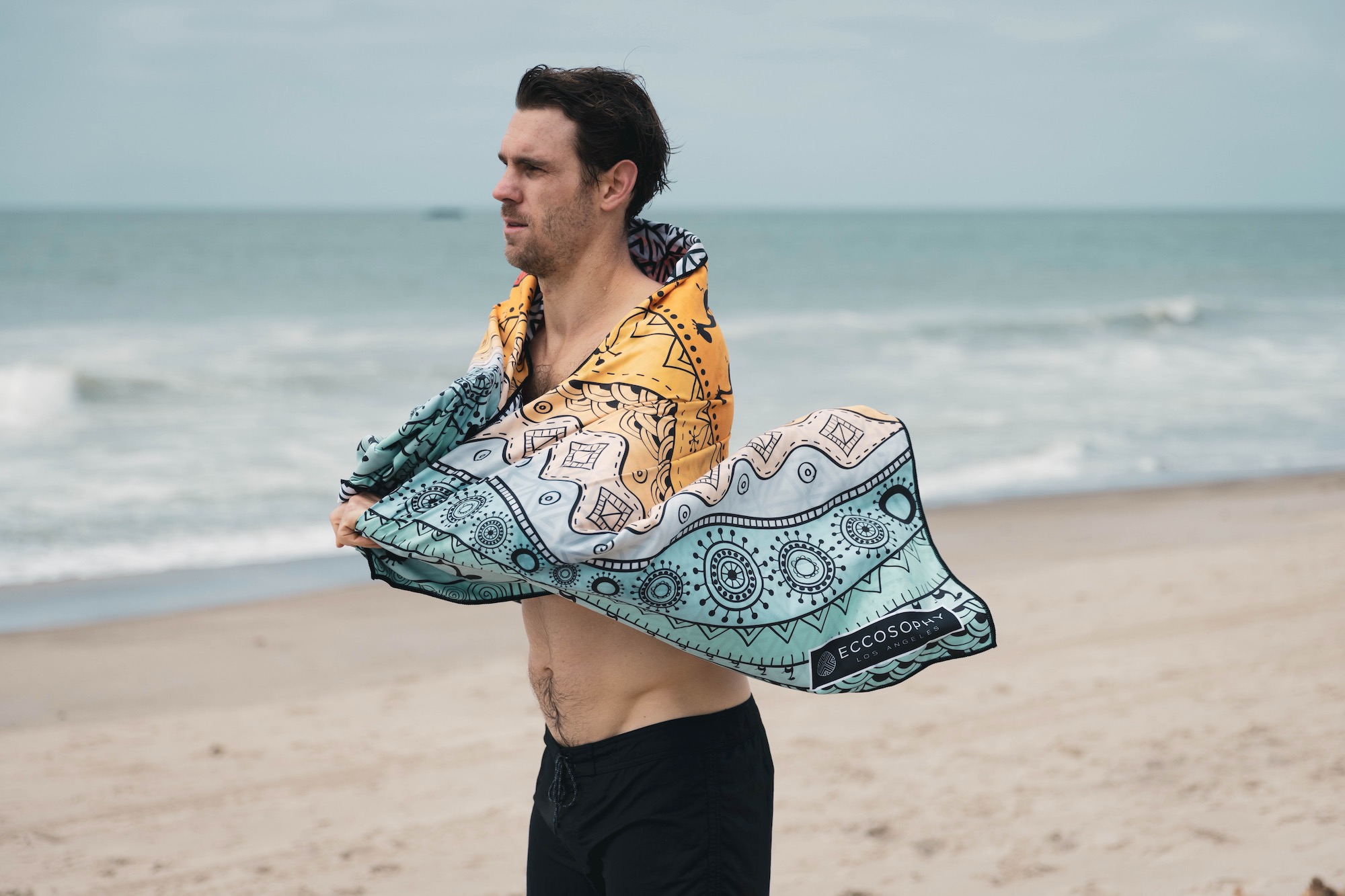
Polyester is used to make towels that are typically referred to as microfiber or microsuede. These small fibers are more densely woven and smoother compared to cotton towels, but they are highly absorbent and dry very quickly. The denser weave of the material also gives sand fewer places to cling onto, and many microfiber towels even claim to be “sand-free.” Microfiber towels are very thin and lightweight, meaning they pack down very small and are easily portable. The primary drawbacks to microfiber towels are that they don’t feel quite as soft or plush against the skin and provide little warmth, comparatively speaking.
Size
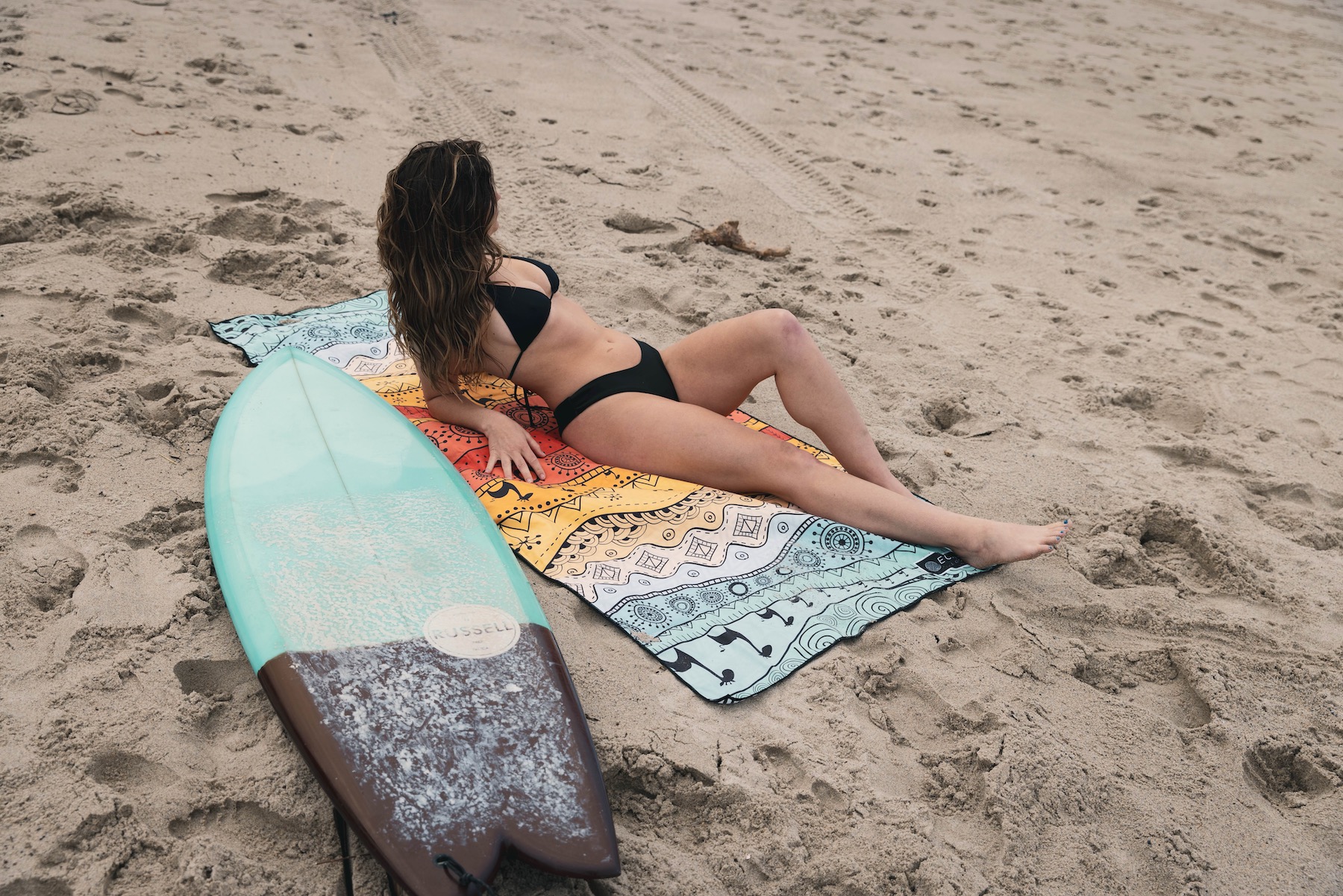
Beach towels are generally larger than standard bath towels, with most measuring in the neighborhood of approximately 30 inches wide by 60 inches long, give or take a few inches. The larger size of beach towels provides more coverage of the sand or ground where you put them down, making it possible for most adults to lie comfortably with the towel between most of their body and the beach. The size of most beach towels also makes it easier to wrap around more of your body when you get out of the water or when you need to change, too.
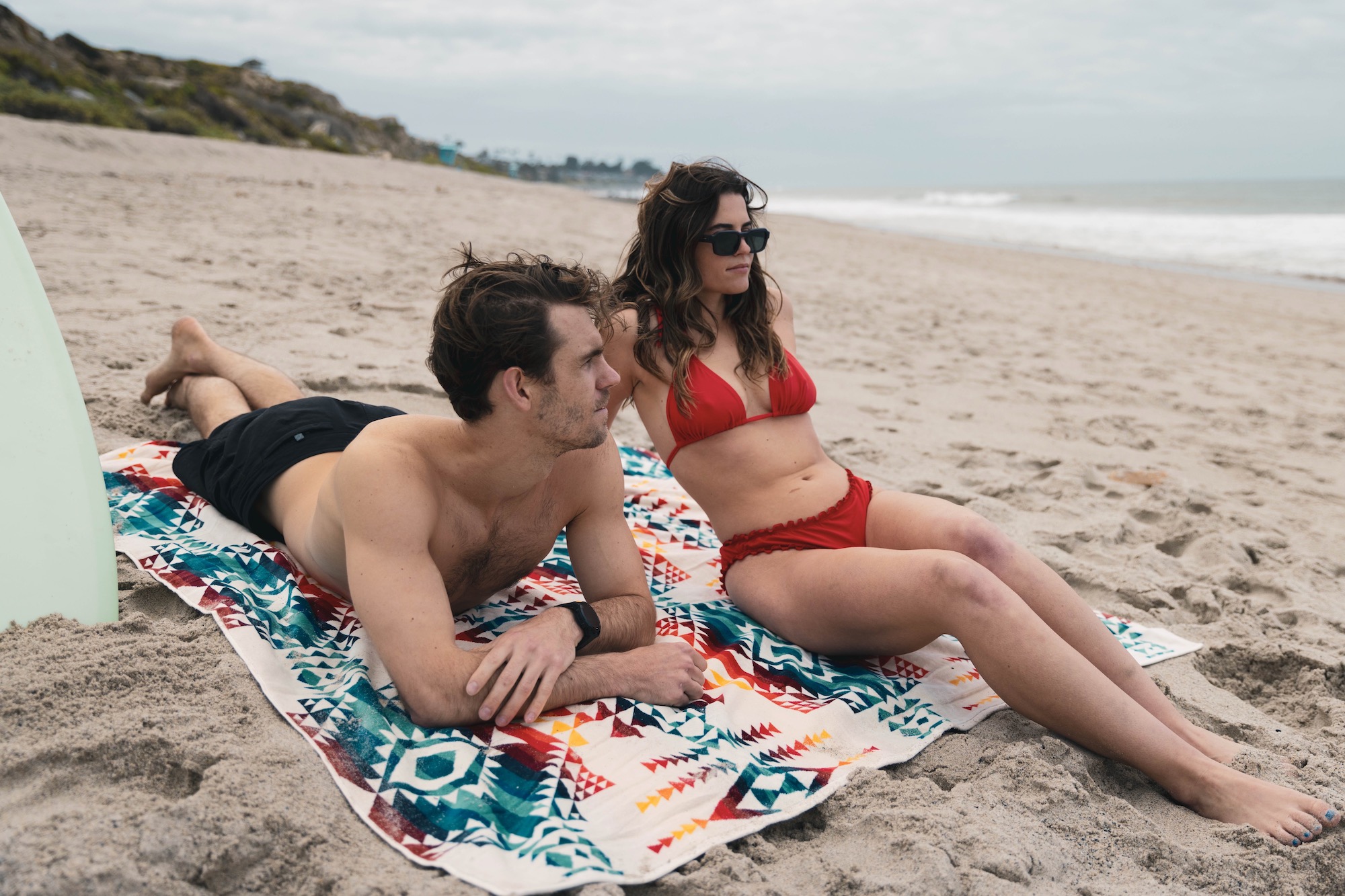
If you’re seeking a larger towel that’s suitable for two or more people to sit on at the beach, there are lots of options. Large towels like the Pendleton Towel for Two or the Sand Cloud Party Blanket are great examples of oversized towels that can easily fit two adults lying down or multiple people sitting on them. While their massive size makes them a little less useful for drying off and comically large for a single person, they are ideal in the right situations. Bear in mind that the larger a towel is, the heavier and bulkier it becomes.
Packability
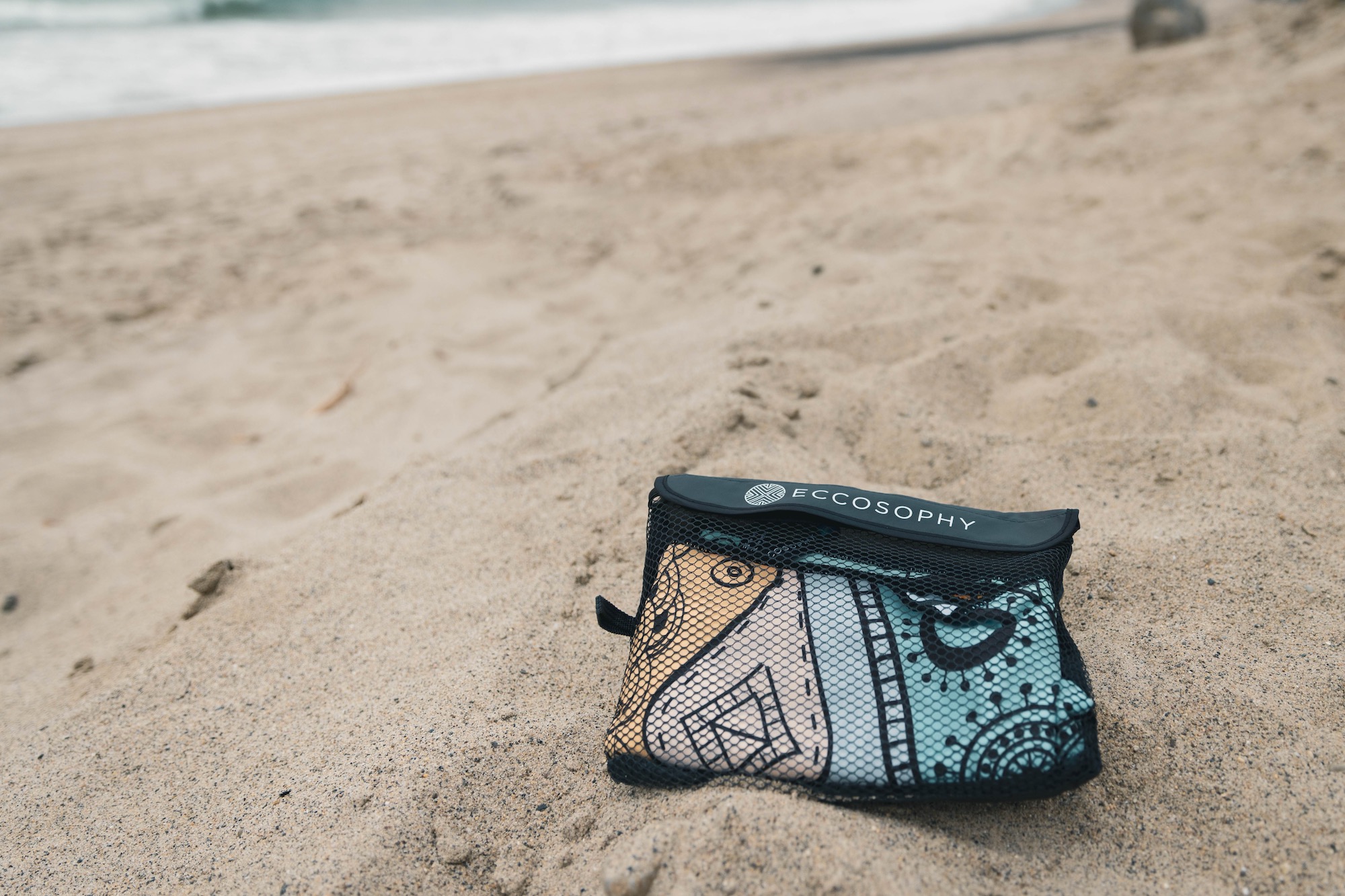
Depending on how far your walk is to the beach or how your transport your beach gear, a towel’s packability may or may not be an important consideration. Most beach towels are easy enough to carry just about anywhere, but if you need to maximize space in your backpack or beach bag to carry everything you need for a significant distance, a smaller and lighter towel may be the best option.
The material used plays a significant role in a towel’s packability. Traditional cotton terry towels are bulkier and heavier than other options, a tradeoff for their plushness, warmth, and absorbency. Additionally, cotton terry towels get heavy when wet and dry more slowly than other materials.
Turkish cotton towels are generally a bit thinner, and, therefore, fold or roll into a smaller packed size. This makes them easier to stuff into a pack or bag alongside your other beach necessities. The reduction in bulk and weight makes them a good option for carrying long distances or packing into your luggage for travel.
Microfiber towels are the lightest and most packable of all. These towels typically fold down smaller than any cotton options. Microfiber towels are great when storage space is at a premium, or you need to pack your beach gear a long way. The tradeoff is that they aren’t quite as plush or warm.
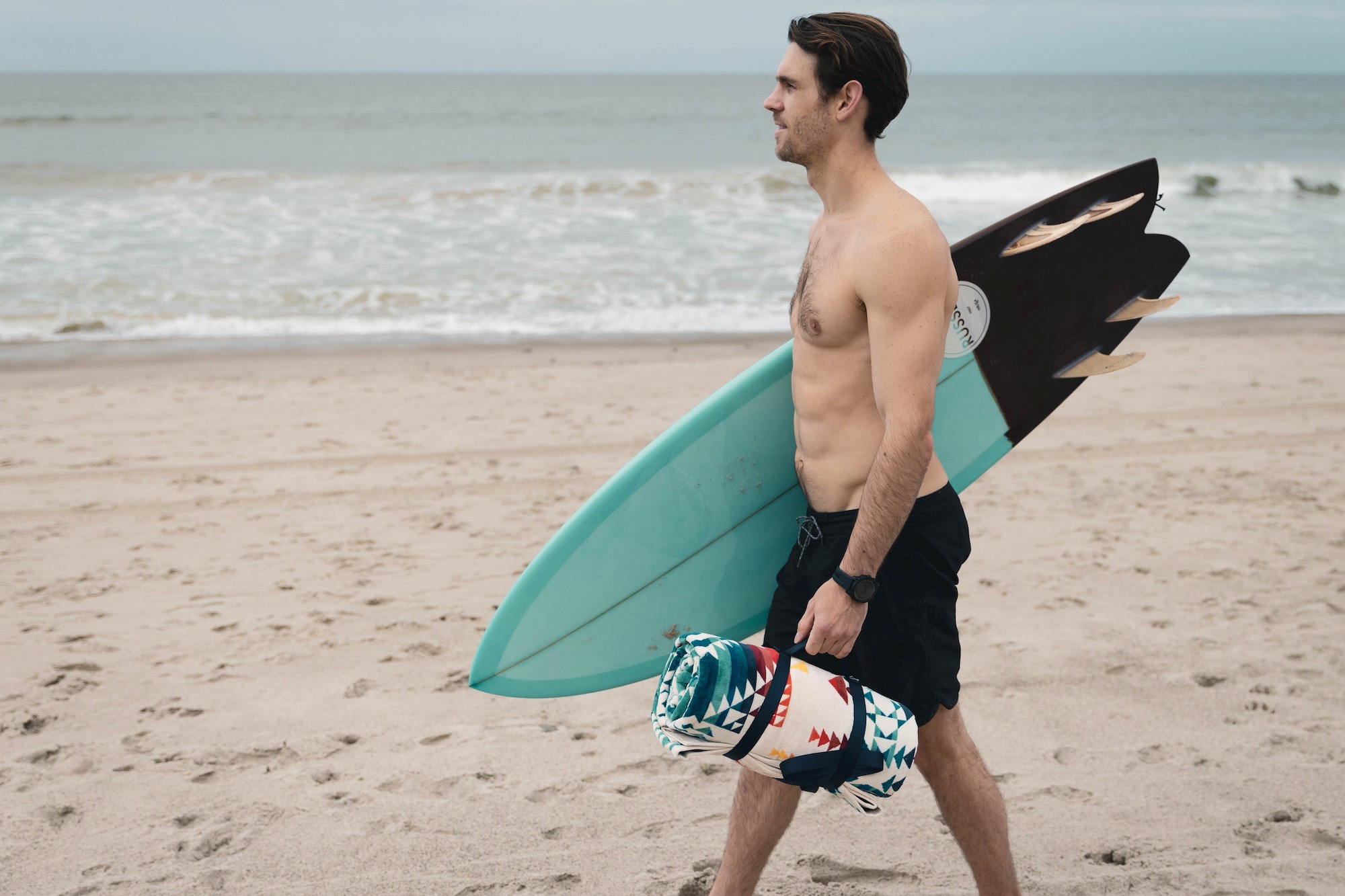
The size of your towel also plays a significant role in its packability. For example, the larger Pendleton Towel for Two is hard to fit in a backpack and weighs 3 pounds. It’s easy enough to carry in a beach wagon and it comes with a nylon strap with a handle that makes it quite reasonable to carry for short distances.
Absorbency
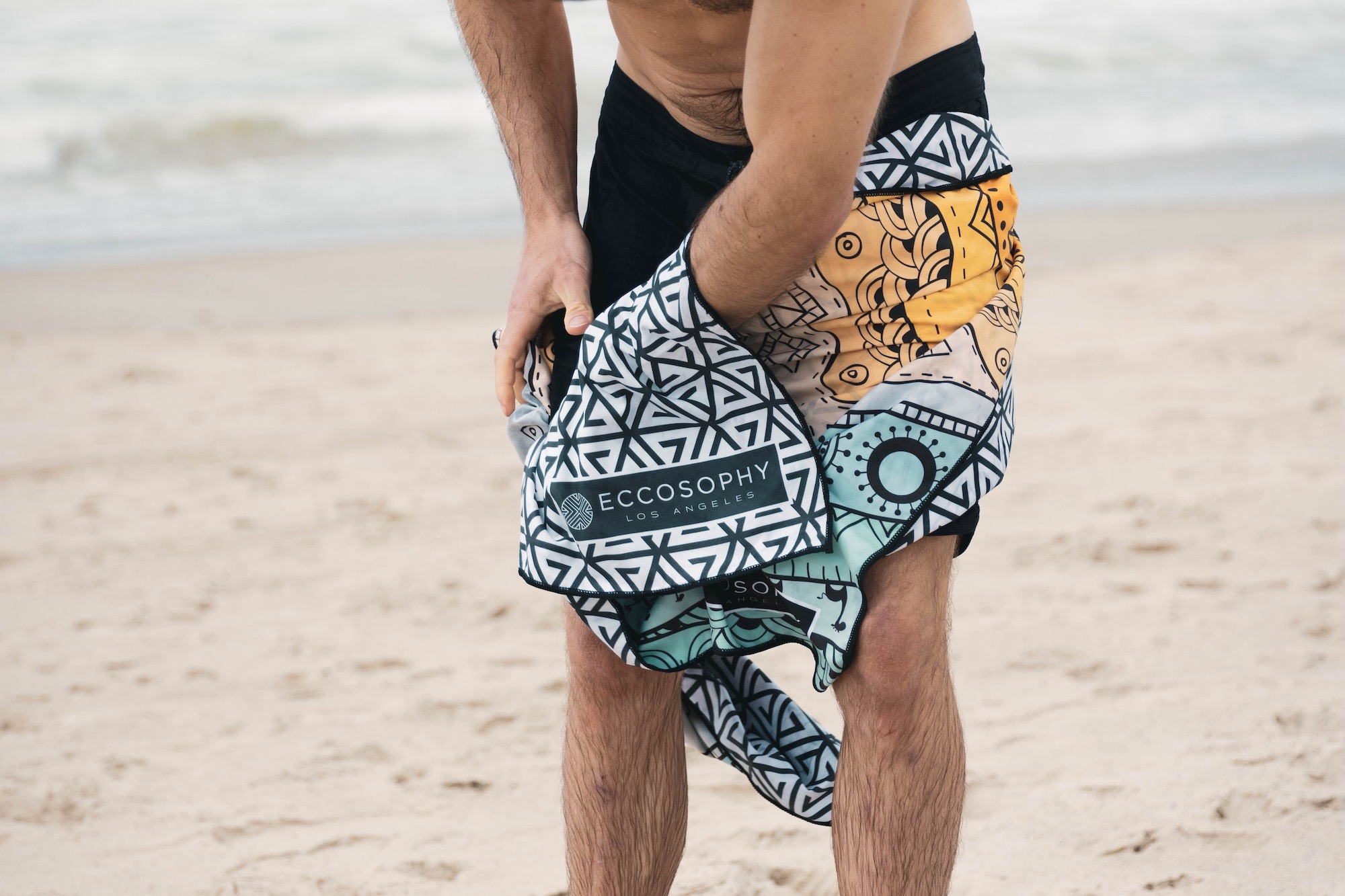
Aside from providing a place to sit or lie down and wrapping yourself up in them, one of the main purposes of beach towels is drying yourself off when you get out of the water. For this reason, most beach towels, whether made from cotton or microfiber, are highly absorbent. Regardless of material, all quality beach towels will get you dry quickly and easily. The biggest differences between materials are the feel against the skin and how long it takes them to dry once wet.
Cotton is the most common material used in beach towels because it is highly absorbent. The soft loops of cotton terry not only feel comfortable against the body, but they soak up moisture readily. Given the thickness of the material, it provides more warmth and cushion, but tends to take longer to dry out. Since they stay wet for longer, this can make sand stick to them more than it already does, making subsequent dry-offs less pleasant.
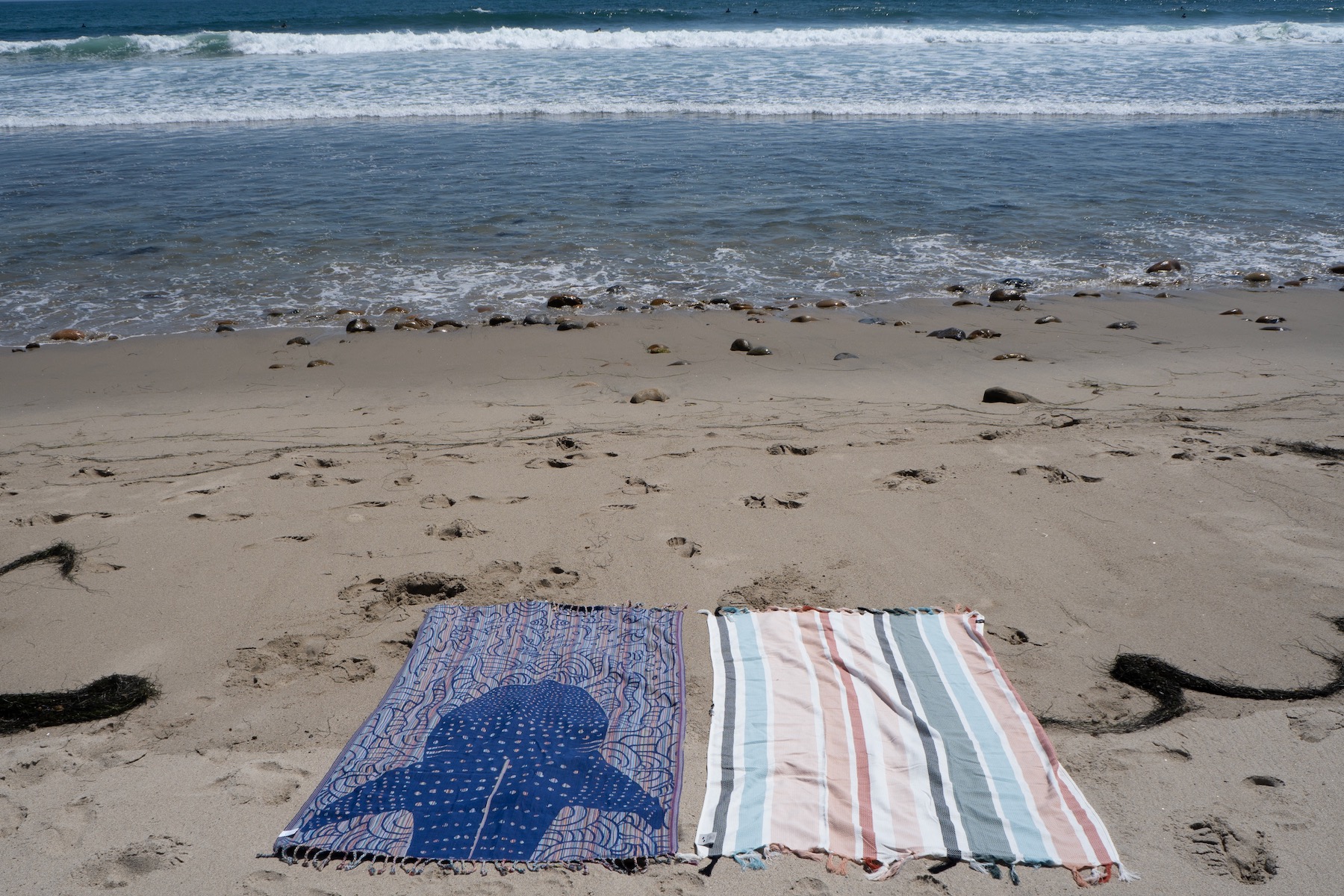
Turkish towels are a bit thinner, but they still absorb water easily while providing a bit more warmth and cushion than thinner microfiber options. Turkish towels also tend to dry a bit more quickly than looped cotton options, but not quite as fast as microfiber.
Considering how thin and light microfiber towels are, they are impressively absorbent. In addition to absorbing moisture readily, microfiber is the quickest to dry by a significant margin.
Sand Resistance
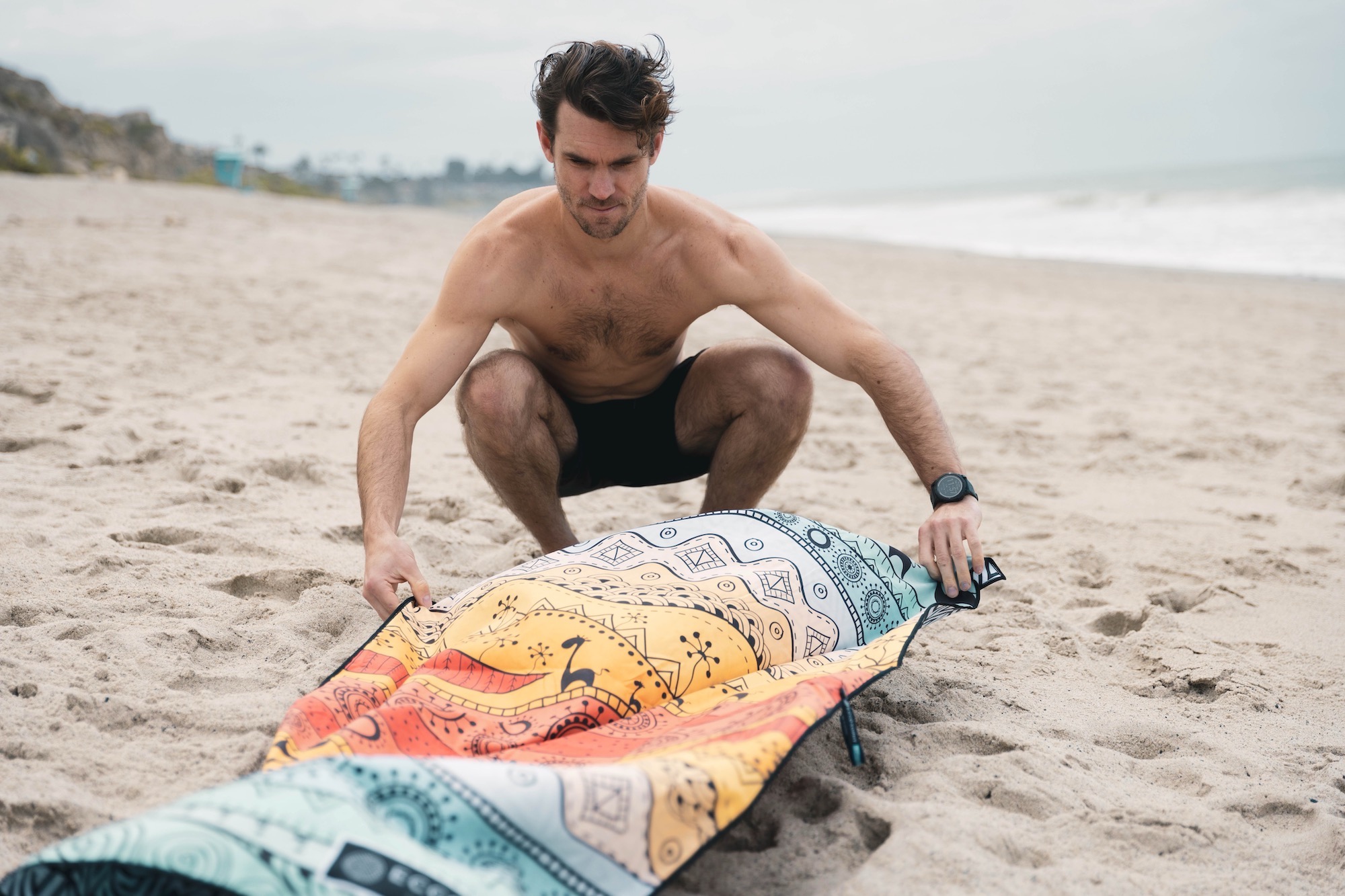
While most of us go to the beach to enjoy some time in the sand, we prefer to leave as much of it as possible at the beach. Unfortunately, sand has a way of sticking to just about everything it touches, towels included, working its way into your beach bag, backpack, car, and even your home. While getting sandy at the beach is inevitable, many modern beach towels aim to be sand-resistant, with some even claiming to be sand-free or sand-proof. The material is the biggest factor at play in a towel’s sand resistance.
For those in search of the most sand-resistant towel, microfiber is the best option. The superfine weave of the polyester fibers doesn’t provide the nooks and crannies for sand to lodge itself into like cotton does. Some sand may stick to microfiber towels when wet, but a quick shake will usually dislodge it easily. And, given how quickly microfiber beach towels dry out, this issue is typically very short-lived.
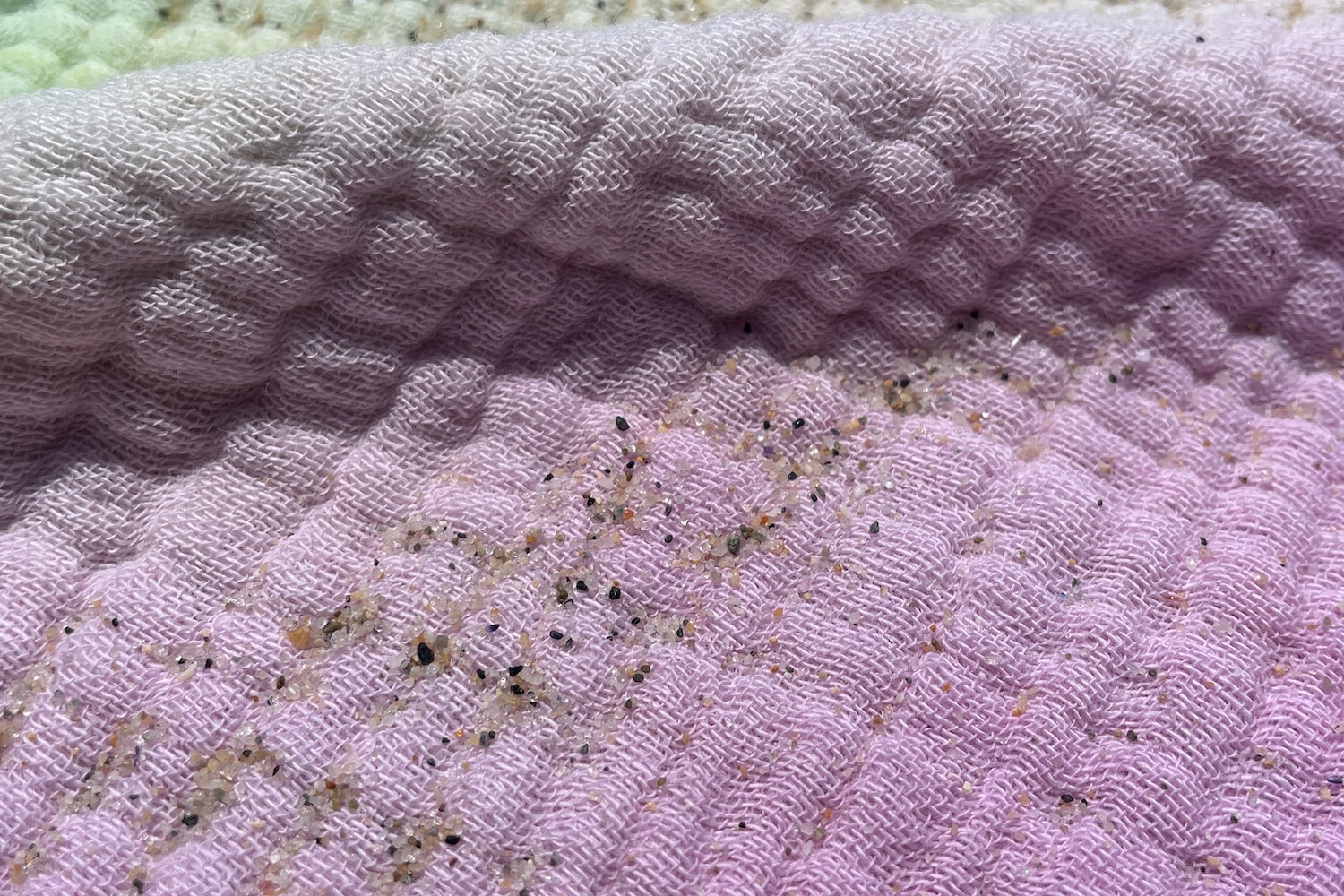
Cotton, particularly the looped terry variety, is more prone to clinging to sand than microfiber. The loops in terry cotton provide lots of places for sand to get trapped and hide. Fortunately, brands like Patagonia and Slowtide make two-sided towels with a more sand-resistant velour side — the loops have been shaved down so it is smoother — and a plusher looped side. Still, cotton stays wet for longer, and sand clings to wet cotton, but you can usually shake or brush most of it off. Even then, you’ll be bringing a bit more sand home with you than with microfiber.
Turkish cotton towels fall roughly in between the microfiber and terry cotton options in terms of sand resistance. The longer, flat woven fibers don’t provide as many places for sand to stick to compared to looped cotton, but more than the smoother and thinner microfiber options.
Warmth
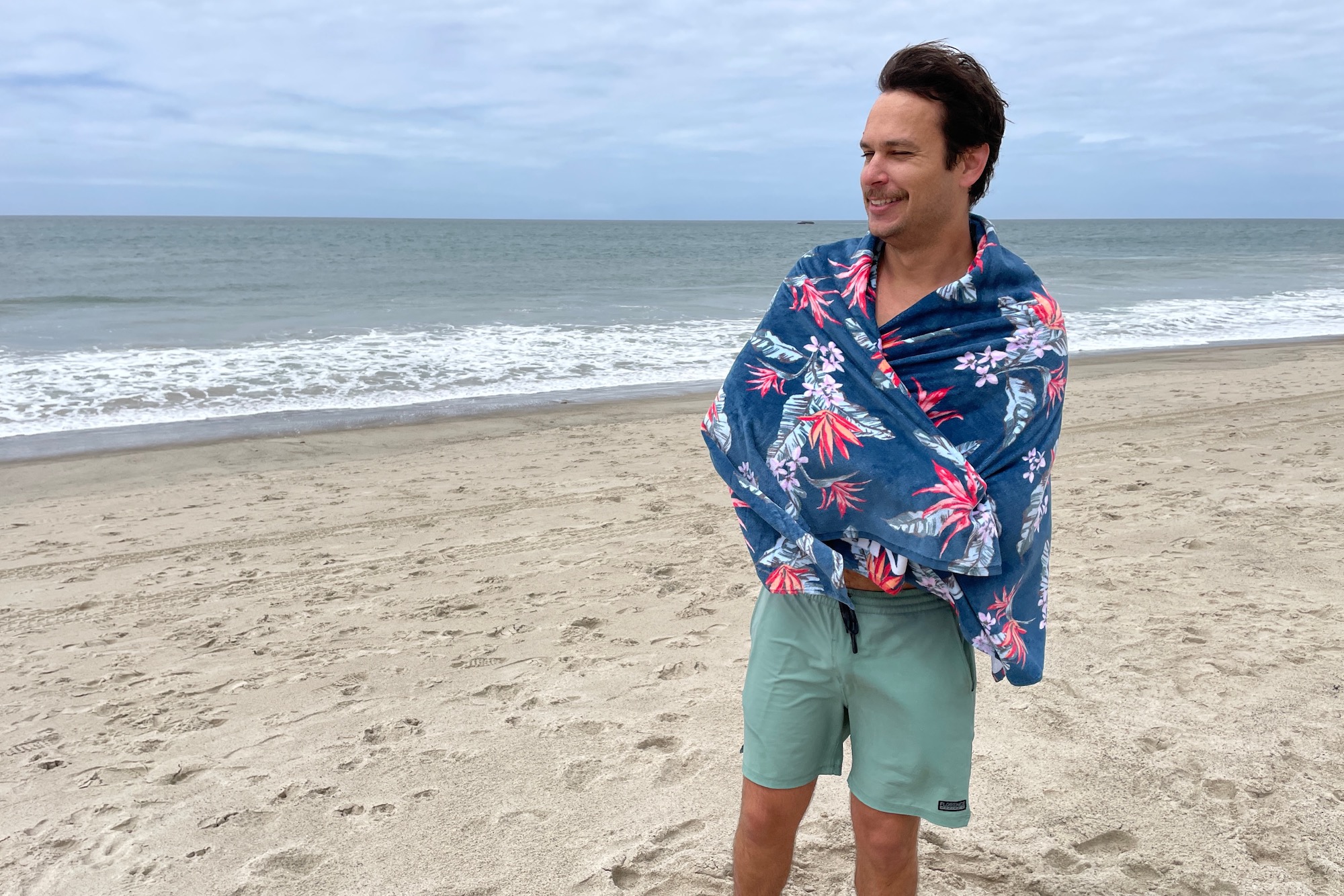
Warmth is another important consideration for many beach towel users, depending on the ocean and air temperatures where you go to the beach. Any towel will provide a layer of protection from the breeze, but if you’re getting out of cold water and need your towel to dry you off and provide a little warmth, then thicker, plusher towels like the Patagonia Organic Cotton Towel and Slowtide Wonderland are the best bet. The loops of cotton in terry towels provide a little loft and extra thickness that helps insulate the body a bit better than thinner Turkish or microfiber options. Additionally, that thickness will also provide a little more cushion against the ground for more comfortable lounging.
FAQ
The best material for a beach towel really comes down to personal preference and the specific performance characteristics you want from your towel. Cotton, and particularly looped cotton, absorbs water readily, feels great against the skin, provides warmth through loft, and is comfortable to lie down on because it is typically thicker than other options. The tradeoffs are that looped cotton holds onto more sand, dries more slowly, and is a bit bulkier when packed.
Turkish cotton towels use a long, flat weave and tend to be thinner and more packable than its looped cotton counterparts. They still have the absorbency and on-skin comfort of cotton but with a slight reduction in plushness and warmth. That said, they don’t hold onto quite as much sand, and they dry a little more quickly, too.
Microfiber is becoming more popular in the world of beach towels. This thin, finely woven polyester material results in thin, lightweight, and highly packable beach towels that take up less room in your beach bag or backpack. They are typically fairly soft to the touch, but they lack the plushness, warmth, and supreme absorbency of looped terry cotton. Still, they absorb water pretty well and dry more quickly than other options. The smooth fabric also resists sand better than cotton — you can usually just shake it right off if it sticks at all.
Beach towels are made with sand in mind, and many claim to be sand-resistant or even sand-proof. Realistically, any towel will pick up a little bit of sand at the beach, especially if it is wet, but some resist holding onto sand much better than others. Towels made from polyester materials like microfiber and microsuede are the most sand-resistant in our experience. While they are generally thinner, the super finely woven material is smoother and doesn’t provide sand with as many places to cling onto. And, even if sand does stick to your microfiber towel, a quick shake or brush of the hand will dislodge most of it.
Cotton, whether looped terry cloth or Turkish, tends to pick up a bit more sand than microfiber. The cotton fibers are not woven as tightly as microfiber, and therefore, sand has more places to hide and cling onto. This is particularly true of looped terry cotton, where sand can cling to the fluffy loops of cotton. The thinner, woven nature of Turkish towels will still pick up sand, but it is generally a bit easier to dislodge from the fibers. Still, even cotton towels made specifically for beach use pick up less sand than a fluffier bath towel, for example. And many looped cotton beach towels even have a smoother, velour side that is more resistant to holding onto sand.
Yes, of course, you can use any towel you choose at the beach. Generally speaking, however, we prefer to use beach-specific towels at the beach for a number of reasons. First, beach towels are typically a bit larger than bath towels. This gives you more space to sit or lay down and provides a bit more body coverage when you want to wrap up for drying or changing out of your wet bathing suit.
Second, bath towels are typically made with loftier looped terry cotton on both sides for maximum body drying comfort and absorption. Most modern beach towels, even those made from looped terry cotton, usually have shorter loops and/or a velour side that is more resistant to sand. The larger loops of the terry cotton on bath towels will be more prone to picking up and holding onto sand, which you may end up rubbing all over yourself while drying off. Additionally, bath towels will likely take longer to dry than towels made for use at the beach.
Bath towels also tend to be thicker and, therefore, bulkier and heavier than beach towels. This makes them less packable. Bath towels also tend to be monotone and generally somewhat dull in their appearance. Beach towels often come in brighter colors and fun designs that allow you to express your style and may be easier to spot on a crowded beach.
We place our beach towels on the sand and use them to dry water (salt water, fresh water, or pool water) off of our bodies, so they tend to get dirty fairly quickly. Keeping your towels clean can help extend their lifespan, keep them feeling soft, and prevent bacterial buildup and odor. Many towel brands also recommend washing your towel before the first use.
Before washing, the first thing you want to do is remove as much sand as possible from the towel. Give it a good, hard shake to try and dislodge as much sand from the fibers. If your towel is still wet, allow it to dry completely and then shake it off again — sand sticks more to damp materials. Removing as much sand as possible before washing will be better for your machine.
If your towel has care instructions, it’s best to follow them. Many towels will have a small tag that specifies what water temperature to use and whether or not it can be dried in a machine. If it doesn’t, those instructions can often be found on the manufacturer’s website.
Check for stains. If your towel has stains from sunscreen, lotion, dirt, or anything else, it’s best to pre-treat them so they will hopefully disappear when it goes through the wash.
While the care instructions for some towels may differ, most specify that they should be washed with cold water and mild detergent with similar colors. Since towels are absorbent, they can be very heavy when they are wet. It’s best to wash them in smaller loads to prevent having too much weight in your machine during the spin cycles. It is generally advised to avoid using fabric softener as it can reduce a towel’s absorbency.
It is important to note that most microfiber towel brands recommend not washing microfiber with other other items made from different materials.
While many beach towels can be tumbled dry in a dryer on a low setting, the preferred method is usually to hang them to dry. If you prefer to use the dryer, be sure to check the towel’s care instructions to make sure it is okay. Always ensure your towel has dried completely before storing it to prevent mildew, bacteria, and odors.
Related Content
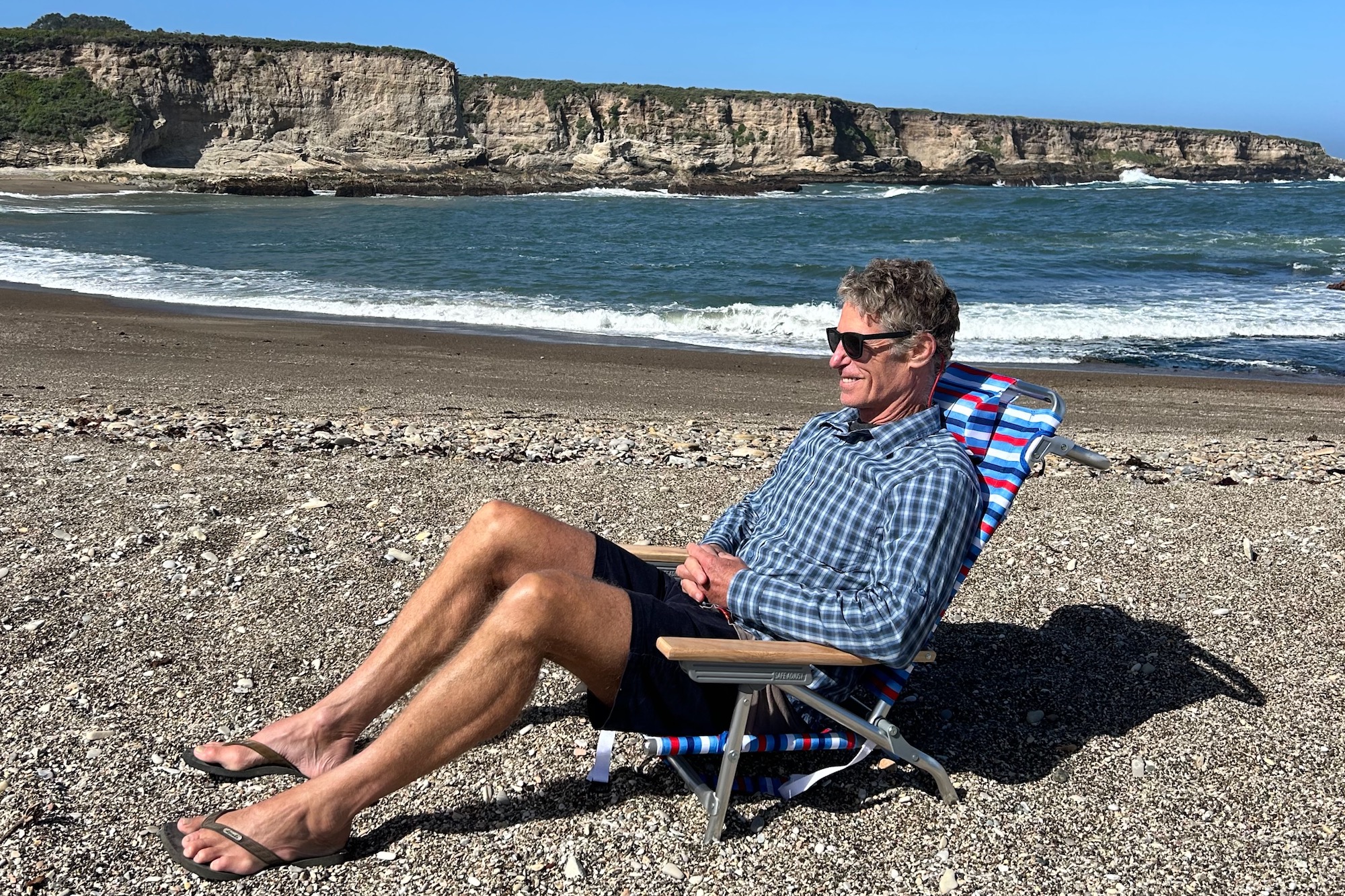
The Best Beach Chairs of 2025
We tested eight of the best beach chairs to help you find the right one to suit your needs and meet your budget.
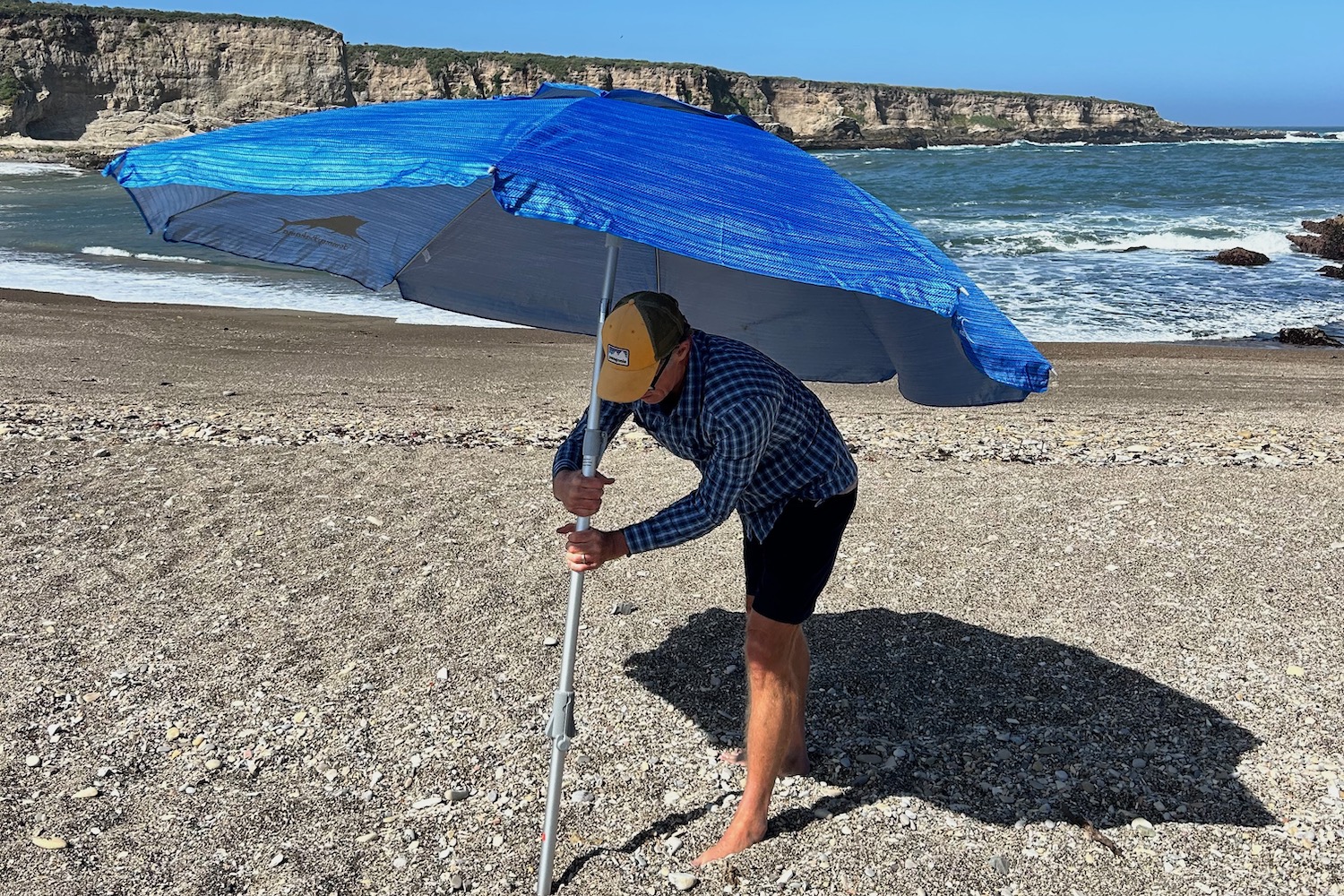
The Best Beach Umbrellas of 2025
We tested eight of the best beach umbrellas and shades on the market to help you find the best option to keep you protected from the sun.
